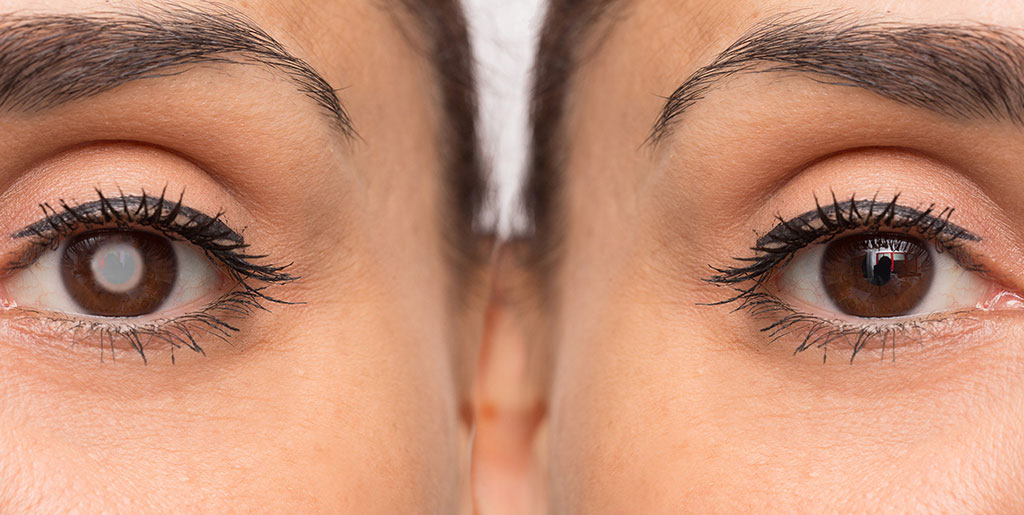Cataract

Cause
A cataract is a dense, cloudy area that forms in the lens of the eye. A cataract begins when proteins in the eye form clumps that prevent the lens from sending clear images to the retina.
Symptoms
- Blurry vision
- Trouble seeing at night
- Seeing colors as faded
- Increased sensitivity to glare
- Halos surrounding lights
- Double vision in the affected eye
- A need for frequent changes in prescription glasses
Signs

Risk Factors
- Older age
- Heavy alcohol use
- Smoking
- Obesity
- High blood pressure
- Previous eye injuries
- Family history of cataracts
- Too much sun exposure
- Diabetes
- Exposure to radiation from X-rays and cancer treatments
Preventions
- Protect your eyes from UVB rays by wearing sunglasses outside
- Regular eye exams
- Stop smoking
- Eat fruits and vegetables that contain antioxidants
- Maintain a healthy weight
- Keep diabetes and other medical conditions in check
Treatment
If you’re unable or uninterested in surgery, your doctor may be able to help you manage your symptoms. They may suggest stronger eyeglasses, magnifying lenses, or sunglasses with an anti-glare coating.
Surgery
Surgery is recommended when cataracts prevent you from going about your daily activities, such as reading or driving. It’s also performed when cataracts interfere with the treatment of other eye problems.
One surgical method, known as phacoemulsification, involves the use of ultrasound waves to break the lens apart and remove the pieces.
Extracapsular surgery involves removing the cloudy part of the lens through a long incision in the cornea. After surgery, an artificial intraocular lens is placed where the natural lens was.
Surgery to remove a cataract is generally very safe and has a high success rate. Most people can go home the same day as their surgery.
